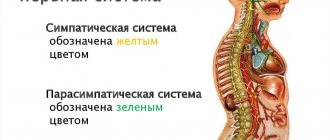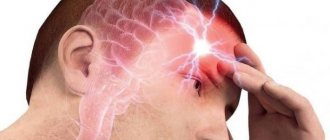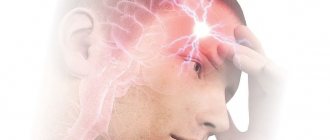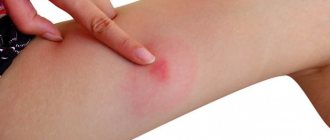Today, the diagnosis of vegetative-vascular dystonia (VSD) is being made less and less often to patients, but not because humanity has been able to completely defeat this disease, but because this formulation is outdated. Vegetative-vascular dystonia means dysfunction of the autonomic nervous system, which is not an independent disease, but is only a consequence of pathological changes in the body.
In the latest edition of ICD-10 there is no such disease as VSD. The disorders characteristic of it are called by the more modern and precise term “somatoform autonomic dysfunction of the nervous system.” But for simplicity of presentation and understanding, we will further use the more familiar concept of VSD.
general information
The autonomic nervous system (ANS) is responsible for the unconscious regulation of the body. The movement of blood through the vessels, the digestion of food, the secretion of saliva - all these and many other processes occur automatically. The ANS itself is divided into two sections: sympathetic and parasympathetic. They are responsible for opposite processes and are in constant balance. Disturbances in this balance cause unpleasant symptoms, which form the clinical picture of NCD.
Adolescents and young women are more susceptible to the disease.
Mechanism of development and causes of the disorder
Angiodystonia does not appear as an independent disorder in the functioning of cerebral vessels. It “accompanies” existing diseases.
It is not at all necessary that it will be associated with brain activity, the nervous system or the psychological characteristics of a person. Sometimes the mechanism of development of cerebral angiodystonia is triggered due to the fact that:
- there are disturbances in the gastrointestinal tract;
- allergic reactions;
- overwork and stressful situations;
- hormonal disruptions or changes (relevant during adolescence and menopause).
The disease does not develop immediately, so not every person can understand in a timely manner that violations are occurring.
In order to better understand the causes of the disease, you should know that a disorder in the blood vessels is divided into primary and symptomatic (a response to another disorder in the body).
The main causes and factors triggering cerebral angiodystonia:
- disturbances in the functioning of the endocrine system;
- disruptions in the autonomic nervous system;
- amyloidosis;
- various types of gastrointestinal disorders;
- diseases and disorders of the central nervous system;
- pancreatitis;
- concussions of varying severity;
- physical inactivity;
- varicose veins;
- Addison's disease;
- increased ICP;
- presence of bad habits (especially long-term smoking);
- increased irritability;
- impressionability;
- age-related features (hormonal imbalance).
It is also important to remember that the disease also develops under the influence of external unfavorable circumstances, among which in the first place is poor nutrition, as well as constant stress on the nervous system. If these factors exist, then it is best to get examined by a doctor.
- Vascular spasm of the brain - causes, treatment, symptoms and prevention
Causes
The list of causes of neurocirculatory dystonia is extensive. It includes:
- hormonal changes: puberty, pregnancy, menopause;
- acute and chronic stress;
- physical or mental fatigue;
- lack of sleep;
- bad habits: smoking, alcohol abuse;
- poor nutrition and excess body weight;
- change of climate and time zones;
- hereditary predisposition;
- drinking large amounts of coffee, energy drinks, and certain medications;
- infectious diseases;
- pathology of the endocrine glands;
- mental disorders;
- osteochondrosis of the cervical spine;
- chronic pathology of the gastrointestinal tract, kidneys, digestive or cardiovascular systems.
Make an appointment
check yourself
Clear signs of hypertension are:
a headache that does not have a clear connection with the time of day; it can occur at night or early in the morning after waking up. As a rule, this is a feeling of heaviness or fullness in the back of the head. Sometimes the pain intensifies with a strong cough, tilting the head, and may be accompanied by slight swelling of the eyelids and face. The vertical position of the patient, muscle activity, and massage usually help to reduce or disappear the headache; pain in the heart area, different from angina attacks: occur at rest or during emotional stress; usually not associated with physical activity; last long enough (minutes, hours); do not go away after taking nitroglycerin; shortness of breath that occurs during physical activity and then at rest; swelling of the legs, which is caused by sodium and water retention. The reason is a violation of the excretory function of the kidneys or taking certain medications; visual impairment, in which fog, veils, and “spots” appear before the eyes.
Symptoms
The symptoms of neurocirculatory dystonia are very diverse and form the basis for the classification of pathology. However, it is possible to identify a number of common features that are characteristic of most types of NDC:
- frequent mood changes;
- constant fatigue and drowsiness;
- lack of strength, weakness;
- feeling of a lump in the throat;
- increased sweating;
- weather sensitivity;
- anxiety;
- feeling of lack of air, etc.
An exacerbation of the disease can be triggered by any stressful situation: an excess of positive or negative emotions, lack of sleep, or even a simple change in time zones.
Types of pathology
Depending on the prevailing symptoms, several types of NCD are distinguished.
- Cardiac. Symptoms related to the heart come to the fore. A person experiences stabbing or pressing pain in the chest, which is accompanied by an increased or decreased pulse, and a feeling of interruptions in the functioning of the heart. The pain syndrome often spreads to the left arm, completely simulating a serious pathology. At the height of an attack, a person often feels weak, dizzy, and afraid.
- NCD of hypotonic type. This type of dystonia is manifested by a periodic decrease in blood pressure. Insufficient oxygen supply to the brain leads to severe dizziness or even fainting. Against the background of low pressure, a spasm of the capillaries occurs, as a result of which the skin turns pale, the hands and feet become very cold. Lack of oxygen leads to a subjective feeling of stuffiness and shortness of breath.
- NCD of the hypertensive type. Manifests itself with periodic increases in blood pressure. During an attack, a person feels hot, his face turns red, and a severe headache appears. Vomiting often occurs during an attack. Often the trigger is a change in weather. Patients get tired quickly and experience mood swings.
- NDC of mixed type. This type of pathology is the least predictable. Blood pressure rises and falls, which is accompanied by corresponding symptoms. Often there are malfunctions in the gastrointestinal tract (diarrhea, flatulence, vomiting), and kidneys (frequent urination). The person becomes emotionally unstable and has trouble sleeping at night.
Depending on the type of flow, the following types of NDC are distinguished:
- mild: symptoms of the disease appear extremely rarely, the person leads a normal lifestyle;
- moderate: manifests itself in single crises, the frequency of attacks affects daily life;
- severe: a person experiences symptoms of NCD almost constantly; against their background, vegetative crises regularly occur.
Vegetative-vascular dystonia: symptoms, diagnosis, treatment
Are you worried about pain in the heart area? Having trouble taking a breath? Feeling dizzy? Are your hands shaking and your stomach churning?
Neither an ECG, nor an MRI, nor all kinds of tests revealed any serious pathology. Is the patient really a malingerer?
Not at all. Everything he feels is real. The disorder that we will discuss today has more than a hundred manifestations. However, often (not always, but often) an attempt to find its “material” basis is unsuccessful.
With questions about what vegetative-vascular dystonia is and how to treat it, we went to see a neurologist, leading specialist in the neurology department of the Expert Clinic Kursk, Natalya Vladimirovna Umerenkova.
- Natalya Vladimirovna, many have heard the name “vegetative-vascular dystonia”. But does such a diagnosis really exist from the point of view of world medicine?
No. This formulation is found exclusively in the post-Soviet space. Of course, this does not mean that patients are making up their complaints - they are very real. However, formally, in the form of a diagnosis, VSD does not exist.
Does osteochondrosis exist? Radiologist at MRI Expert Elets says:
Yavorsky Evgeniy Valerievich
- What symptoms are they talking about when they mean vegetative-vascular dystonia?
Figuratively speaking, it is probably easier to name signs that do not occur in vegetative-vascular dystonia.
Essentially speaking, there are about 150 manifestations that may indicate the presence of VSD.
Conventionally, they can be divided into symptoms from the cardiovascular system (lowering or increasing blood pressure, discomfort or pain in the heart area, a feeling of “interruptions” in the heart, a feeling of tightness in the chest, headaches, dizziness), the respiratory system (a feeling of lack of air, inadequate inhalation or exhalation).
It's off scale! We are looking for the causes of high blood pressure. Read here
Numbness of the skin around the mouth also occurs; numbness and coldness of the hands and feet; general weakness, lethargy, fatigue; increased sweating; a slight increase in body temperature (slightly above 37°C), which cannot be explained by any other disease; urination and sexual dysfunction. From the gastrointestinal tract, pain, nausea, impaired intestinal motor function, and a feeling of “fullness” in the upper abdomen may be observed.
- What diseases can be hidden under what is called vegetative-vascular dystonia?
Variety. This may be coronary heart disease, hypertension, pathologies of the thyroid gland in the form of weakening or strengthening of its function, problems of the digestive system (gastritis, biliary dyskinesia), organic damage to the central nervous system (pathology of the hypothalamus), diseases of the adrenal glands, diseases of the urinary tract (cystitis). ), neurotic and psychotic disorders and others.
What is hypothyroidism of the thyroid gland? The endocrinologist at the Expert Clinic Borisoglebsk, Olga Arkadyevna Kalinina, tells
- Neurocirculatory dystonia and vegetative-vascular dystonia - are they the same thing or different?
Yes, VSD and NDC are, in principle, the same thing.
- What should a patient do if the doctor said that he has “vegetative-vascular dystonia”: look further for a diagnosis or live with VSD?
Depends on whether the patient has already been examined before or not. Vegetative-vascular dystonia is, as a rule, not a “first appointment” diagnosis. As we already know, this formulation may hide very real ailments. Therefore, a full examination of the patient is necessary to exclude these diagnoses. And if after this no existing diagnosis can be established - due to the lack of sufficient criteria - we can talk about the presence of autonomic disorders.
It hurts, but there is no diagnosis. Read here
- What are the reasons for the development of vegetative-vascular dystonia? What causes this condition?
The autonomic nervous system consists of two large divisions - sympathetic and parasympathetic. Without going into details, we can say that the “directions” of these two systems are opposite, i.e. they have an antagonistic effect on various body functions. Normally, they are in a state of equilibrium with respect to each other.
In some situations (for example, chronic disease, intoxication, etc.), the “coherence” of the work of these departments is disrupted. Often the sympathetic nervous system begins to predominate (it is more variable and sensitive). In response to some excess load, a disproportionate response of this department occurs in the form of excessive reactions, symptoms that are regarded by the patient as abnormal and frightening.
In addition, this complex involves the hypothalamus and the so-called limbic system (it is responsible, in particular, for emotions), which perform a kind of integrating function. When the functions of this complex are disrupted, the result is something resembling an “orchestra without a conductor,” i.e. each participant begins to function in his own way. In other words, normally, when the patient might not feel, say, certain fluctuations in blood pressure, in conditions of vegetative imbalance it begins to be perceived differently, sometimes with emotional “coloring” (fear, anxiety).
- Natalya Vladimirovna, how is vegetative-vascular dystonia confirmed or refuted? What diagnostics should a patient with suspected VSD undergo?
It depends on the type of complaint. If, for example, this is a rapid heartbeat or “interruptions” in the work of the heart, fluctuations in blood pressure, then a set of studies will be appropriate, i.e. this could be an ECG, Holter monitoring, echocardiography, a certain set of laboratory tests (clinical blood test, urine test, study of thyroid hormones).
If there are complaints from the respiratory system, fluorography, examination of external respiration function, and some tests will be advisable.
Why are x-rays dangerous? Yulia Aleksandrovna Rutskaya, head of the radiology department of the Expert Clinic Kursk, tells
If there are manifestations from the gastrointestinal tract, then these are endoscopic studies (gastroduodenofibroscopy, colonoscopy, ultrasound of the abdominal organs, a number of biochemical blood tests).
Where can I find the courage to make up my mind? Gastroscopy – WITHOUT fear! Read here
If there are signs of a possible pathology of the urinary system, an ultrasound of the kidneys and bladder, a general urine test, a biochemical blood test with determination, in particular, of urea, creatinine, etc. are prescribed.
Some patients may be prescribed a consultation with a psychotherapist - for example, when a doctor, during a conversation with a patient, discovers that complaints are “blurred”, when they are difficult to attribute to a particular area or system of the body. Diseases in which complaints and other manifestations affect many systems certainly exist, but a connection between the subjective feeling of malaise exclusively and the psyche cannot be ruled out. Therefore, an examination by a psychotherapist may be required; there is nothing wrong with that.
- What specialty does the doctor treat the symptoms of VSD?
This is the competence of a neurologist and psychotherapist, and, if necessary, a psychiatrist.
You can make an appointment with a neurologist here
Please note: the service is not available in all cities
- What are the principles of treatment of vegetative-vascular dystonia?
You should always remember that VSD is a benign disorder that can be eliminated by optimizing your lifestyle, proper work and rest schedule, and sufficient sleep. To eliminate its manifestations, medications of various classes are used - in particular, some types of antidepressants and anti-anxiety drugs. Treatment is often complemented by psychotherapy, which in some cases is the main type of treatment.
For reference:
In 2004 she graduated from Kursk State Medical University.
In 2004-2005, she completed an internship in neurology at the above-mentioned university.
Since 2015, he has been working at Clinic Expert Kursk LLC, and is a leading specialist in the neurology department.
Vegetative crisis
A vegetative crisis is a sudden failure in the functioning of the ANS. As a rule, it occurs in young patients. Depending on the symptoms, there are three types of crises:
- sympathoadrenal (panic attack): develops due to the release of stress hormones into the blood, as a result of which the patient’s blood pressure and pulse sharply increase, severe chills, anxiety, fear of death appear;
- vagoinsular: the opposite type of crisis, manifested by a drop in pressure and pulse, sweating and weakness; often accompanied by diarrhea;
- mixed: combines characteristics of both types.
Concomitant diseases
Violation of vascular tone is accompanied by many diseases:
- Encephalopathy. This disease occurs due to a chronic cerebral circulation disorder, resulting in the death of brain cells. Accompanied by intellectual, vegetative and emotional disorders. At first, the disease is functional and reversible, but if atherosclerosis joins angiodystonia over time, the defect becomes irreversible.
- Hypertonic disease. The pathology is based on a sustained increase in systolic blood pressure above 140 mm Hg. Due to the increased tone of the vascular walls, the minute-by-minute volume of blood circulation in the large and small vessels of the brain decreases, which is why it suffers from ischemia and hypoxia.
- Cardiopsychoneurosis. It is characterized by pain in the heart, rhythm disturbances and fluctuations in blood pressure. Usually has a mixed type.
Complications
NCD is not an independent disease, but it can cause the development of dangerous conditions. In severe dystonia and lack of adequate therapy, it can cause:
- myocardial infarction;
- ischemic or hemorrhagic stroke;
- cholelithiasis and urolithiasis;
- diabetes mellitus;
- arterial hypertension that does not respond to classical treatment regimens.
Malfunctions of the ANS also affect the immune system. Resistance to infections with this pathology is significantly reduced.
Chance find
The asymptomatic form of hypertension is usually detected by chance, during an outpatient examination, and often not by a cardiologist, but by a therapist or other specialist. The doctor measures the blood pressure and understands that this is an experienced hypertensive patient.
There are many people who do not feel surges in blood pressure. They may suffer from primary or essential hypertension, the cause of which is bad habits, age, poor vascular condition, heredity, or secondary or symptomatic hypertension. In this case, it accompanies another ailment - urolithiasis and other kidney pathologies, endocrine diseases (thyrotoxicosis, diabetes mellitus), obesity, and heart disease. But in only one out of ten patients, high blood pressure is caused by damage to any organ. The rest - almost 90% of patients - suffer from essential hypertension, the occurrence of which is their own fault.
Diagnostics
In the process of diagnosing neurocirculatory dystonia, especially of the mixed type, it is important for the doctor to exclude other causes of similar symptoms. The patient will undergo a thorough examination, including:
- collecting complaints and medical history, clarifying all details of the course of the disease;
- standard examination, including assessment of the functioning of the main body systems, including both sections of the ANS;
- general blood test to exclude inflammatory manifestations;
- general urinalysis to exclude renal pathologies;
- biochemical blood test, which necessarily includes a study of glucose and cholesterol levels, hormonal status, blood clotting and markers of autoimmune processes;
- ECG, ultrasound of the heart;
- daily monitoring of ECG and blood pressure;
- functional load tests (bicycle ergometry, treadmill) to assess the heart’s response to stress and determine the “safety margin”;
- chest x-ray, spirometry if necessary (if the patient complains of shortness of breath and a feeling of lack of air);
- rheoencephalography, Doppler ultrasound of the head and neck vessels: to assess the quality of blood supply to the brain and its structures;
- MRI of the head, x-ray of the sella turcica to visualize or exclude space-occupying formations;
- electroencephalography if one or another form of epilepsy is suspected.
During the examination, the patient also consults with a therapist, neurologist and cardiologist. If necessary, doctors of other specialties are involved: psychiatrist, endocrinologist, pulmonologist, gynecologist, nephrologist, etc.
To treat or not to treat?
Many patients note that at rest, when there is no special stress, when it is cool outside and no one is annoying, “one can live,” and the patient can forget about problems for a while. Your head brightens, you think easily and naturally, you want to do intellectual work. However, the patients themselves point to the return of the entire “bouquet” and understand that well-being is imaginary and short-lived, so “taking care of yourself” is simply necessary. Before the doctor prescribes medication, the patient must take measures without which no medicine will help:
I. Adjust the work and rest schedule
To achieve this you need:
- Refuse to sit at the computer at night, watch movies that stimulate the central nervous system and cause a storm of emotions even during the daytime;
- Read your favorite novels only during the day;
- Do not overexert yourself in everyday life, do only feasible work;
- It is enough to be in the fresh air, avoid stuffy rooms;
- Give up bad habits and don’t reach for a cigarette at the slightest nervous irritation;
- Prefer active recreation (walking, fishing, “quiet” hunting in the forest), remember that neurocirculatory dystonia does not tolerate physical inactivity well.
II. Organize the alternation of periods of sleep and wakefulness
The process of falling asleep in those suffering from vascular dystonia often causes problems, especially if a person is used to going to bed at random, “as God puts it in his soul,” so it is imperative to write down the following points for yourself:
- Go to bed at the same time, it is better if it is before eleven o’clock in the evening;
- No irritants before bedtime - do not start quarrels, respond to provocations kindly and calmly;
- An evening promenade is advisable, you don’t need much, 20-30 minutes is enough;
- A warm, pleasant bath with pine extract or valerian root will relieve fatigue and tension;
- A ventilated room and access to fresh air will relieve stuffiness and nightmares;
- At night it is useful to drink a glass of warm milk with honey, which gives a calming and mild sleeping effect;
- You also need to get out of bed at the same time to develop a habit (Saturday and Sunday are no exception);
- Do not jump out of bed abruptly, your head will start spinning immediately. It’s better to lie down for a while and then get up calmly.
III. Go on a diet
Nutrition, oddly enough, plays a significant role in the formation of cerebral vascular dystonia, so something should be excluded from the diet, and something should be added:
- Avoid strong coffee and tea, especially in the evening, and if you are thirsty, replace with herbal infusions that help relieve spasms in the blood vessels of the head. Traditional medicine offers many different options, and at the nearest pharmacy you can buy everything for pennies and without problems;
- Freshly squeezed vitamin juices will clean blood vessels and strengthen the body;
- Avoid fatty, fried and spicy foods, which not only excite the nervous system, but also contribute to the formation of cholesterol plaques and the development of cerebral atherosclerosis, which, naturally, can significantly aggravate an existing pathology.
IV. Auto-training
Taking care of yourself means putting your nervous system in order, because it’s not for nothing that they say: “If you can’t change your circumstances, change your attitude towards them.” Neurocirculatory dystonia requires exactly this approach. Of course, you can turn to a psychologist or psychotherapist, but the internal focus will not lose its significance.
They say that breathing exercises are very good for auto-training, it helps to “persuade yourself”, disciplines you and helps improve your mood. It is better to look at life’s “vicissitudes” “philosophically”, because sooner or later everything passes. If you try to avoid conflicts and irritations, treat others kindly, and every morning convince yourself that everything is wonderful, then your thoughts will become material and life will begin to improve.
Treatment of neurocirculatory dystonia
Treatment of NCD has several goals:
- reduction in the strength and frequency of attacks;
- eliminating specific symptoms that cause discomfort in the patient;
- stabilization of the nervous system, in general.
The doctor’s task is to correctly select not only medications from various groups, but also non-drug treatment methods: physiotherapy, exercise therapy, massage, psychotherapy, etc.
The choice of specific medications depends on the form and severity of the disease. The patient may be prescribed:
- sedatives to eliminate excessive anxiety (Persen, valerian-based drugs, etc.);
- sleeping pills for poor sleep quality (donormil, zolpidem);
- tranquilizers in the presence of severe crises that occur like a panic attack, as well as in the ineffectiveness of softer drugs (afobazole, phenibut, atarax, etc.);
- antidepressants for excessive apatite, lethargy, depression; improve heart function, reduce pain (paroxetine, sertraline);
- nootropic drugs to improve memory, concentration and general stimulation of the body (glycine, piracetam, pantogam);
- drugs to improve metabolism in the brain (Actovegin, Cerebrolysin);
- angioprotectors to restore full blood supply to the central nervous system (Cavinton, pentoxifylline);
- antihypertensive drugs from the group of adrenergic blockers for increased pulse and blood pressure (anaprilin, bisoprolol);
- hypertensive drugs for low blood pressure (caffeine, mezaton, preparations based on ginseng and lemongrass);
- antioxidants that help strengthen the body in general (succinic acid, mexidol);
- multivitamins, as well as preparations with a high content of B vitamins to improve nerve conduction (milgamma, neuromultivit).
The selection of a specific combination of drugs, their dosage and regimen of administration is carried out only by a doctor, depending on the clinical situation and the individual characteristics of the patient’s body.
Non-drug treatments for NCD are used as an adjunct to medications. Their task is to strengthen the body and increase its resistance. The most popular are:
- physiotherapy: laser treatment, magnetic therapy, electro- or phonophoresis, electrosleep;
- massage of the cervical-collar area and general;
- physiotherapy;
- acupuncture;
- a variety of relaxing procedures: wraps, floating, applications, etc.;
- psychotherapy;
- Spa treatment.
It is important to remember that most of these techniques can only be used outside of an exacerbation.
Make an appointment
Treatment and prognosis
In patients with vegetative-vascular dystonia, treatment is carried out under the supervision of doctors of the following specializations: therapist, neurologist, endocrinologist, psychiatrist. Certain prescriptions will depend on the predominant symptoms of VSD. Usually, taking into account the nature and etiology of the disease, complex long-term individual therapy is carried out.
Physical therapy classes
Special physical education is most useful in the treatment of VSD in both adults and children. Such exercises have a general strengthening effect and are an excellent way to train the whole body and improve performance. Designed for the treatment of VSD and thought out taking into account age and health status, physical therapy should also exclude jumping. In general, an active lifestyle can be an integral component of the prevention of vegetative-vascular dystonia.
Undergoing physical therapy
Therapeutic massage, water treatments, and reflexology also have a positive effect in the treatment of VSD. The physiotherapeutic effect is selected depending on the type of disease: it can be electrophoresis with calcium or caffeine (in the case of vagotonia) or with magnesium, papaverine or bromine (for the treatment of sympathicotonia).
Use of drug treatment
If general strengthening and physiotherapeutic measures are insufficient for the effective treatment of VSD, the specialist individually selects drug therapy, which may include the following drugs:
- sedatives that reduce the activity of autonomic reactions, antidepressants, nootropics;
- beta-blockers and herbal psychostimulants that help reduce vegetative-vascular manifestations;
- Vitamin-mineral complexes usually have a beneficial general strengthening effect.
If necessary, to treat various forms of VSD, a course of therapy is also carried out aimed at eliminating chronic foci of infection, concomitant endocrine or somatic pathology. The doctor regularly monitors a patient with vegetative-vascular dystonia. Clinical examination may be prescribed (every 3-6 months), especially in the autumn-spring period.
Prevention
Prevention of NCD is important not only for healthy people who are at risk, but also for those who are already closely confronted with this pathology. Changing your lifestyle, adjusting your diet and physical activity help strengthen the body and significantly reduce the risk of unpleasant symptoms. Doctors recommend adhering to the following rules:
- eliminate overtime, ensure daily proper rest;
- create the most peaceful atmosphere at home and at work;
- go to bed on time (duration of sleep at night is 8 hours or more);
- do not ignore walks in the fresh air;
- choose a suitable sport that will allow you to practice for your pleasure (swimming, walking, cycling, yoga, Pilates, etc.);
- adjust nutrition: the daily diet must meet the standards for caloric content, the ratio of dietary fat, the content of vitamins and microelements;
- minimize the consumption of food stimulants: tea, coffee, fatty foods, smoked foods, alcoholic drinks;
- drink at least 2 liters of clean water daily (other drinks do not count).
Compliance with these rules is useful for the prevention of not only neurocirculatory dystonia, but also many other diseases. The body always responds gratefully to care for it and begins to cope much better with inevitable stress and physical activity.
Treatment and monitoring of a patient with cerebral angiodystonia
Before starting treatment, it is worth determining the etiology of dystonia. Influence on the main pathogenetic link increases the chances of a complete cure.
Directions of treatment:
- Etiological treatment is correction of the underlying disease that provokes VSD;
- Normalization of vascular tone;
- Symptomatic therapy;
- Lifestyle correction, psychotherapy.
The treatment of uncomplicated angiodystonia is based on physiotherapeutic methods (therapeutic exercises, hydromassage, manual therapy, acupuncture, herbal medicine, aromatherapy), as well as the elimination of provoking factors (giving up alcohol, tobacco, reducing stress, sanitation of foci of chronic infection, if necessary, changing place work and residence). Psychotherapy with auto-training elements is quite effective.
Drug treatment of vascular dystonia of the brain is reduced to normalizing the relationship of the hypothalamic and limbic systems with other internal organs. The course of treatment is prescribed for a long period.
Drug groups:
Herbal-based sedatives - valerian, motherwort tincture, Sedavit, Persen; if ineffective - barbiturates or bromides (Elenium, Sibazon, Fenozepam, Grandaxin, Afobazol; They relieve emotional and mental stress, anxiety, fear, and normalize vegetative reactions.- Drugs that improve cerebral blood flow (neuroangiocorrectors) – Stugeron, Cinnarizine, Cavinton;
- Drugs with nootropic effect - Piracetam, Nootropil;
- Antidepressants – Amitriptyline, Fluoxetine, Paroxetine. Caffeine-based psychostimulants, antipsychotics;
- Alpha or Beta blockers (for hypertensive type) - Anaprillin, Phentolamine, Prazosin, Sotalol, Bisoprolol; ACE inhibitors – Berlipril, Enalapril; Ca2+ channel blockers – Amlodipine, Nifedipine;
- For the hypotonic type - methylxanthines (Euphylline, Theophylline), M-cholinergic blockers (Atropine);
- Vitamin complexes, antioxidants, diuretics, adaptogens with extract of eleutherococcus, lemongrass, ginseng;
- Glycine - to reduce the excitability of the autonomic nervous system, improve metabolic processes in the brain.
As rehabilitation for VSD, they use a stay in a sanatorium with the use of water procedures (swimming, body wraps, contrast showers, hydromassage), walks in the fresh air, phyto-baths (coniferous, nitrogen, valerian, iodine-bromine, hydrogen sulfide, radon, carbon dioxide). It is also recommended to take a course of electrophoresis and electrosleep.
Treatment at the Energy of Health clinic
Doctors at the Energy of Health clinic do not downplay the significance of the symptoms of NCD. We guarantee each patient a thorough examination, including all the necessary samples and tests, as well as selection of the most gentle, but at the same time effective treatment. At your service:
- drawing up a medication correction regimen in accordance with the characteristics of the course of the disease (not only the complex of symptoms, form and stage of the disease are taken into account, but also the emotional background, chronic diseases, hormonal status, characteristics of the patient’s work, etc.);
- restorative procedures: physiotherapy, massage;
- selection of physical exercises to perform in the gym with an instructor and at home;
- acupuncture;
- help from a psychotherapist and psychiatrist;
- selection of a resort for treatment in a sanatorium, collection of necessary documents;
- detailed recommendations for correcting lifestyle, nutrition, and physical activity.
We will help keep the disease under control and will always come to the rescue in case of exacerbation.
Advantages of the clinic
The Health Energy Clinic uses an integrated approach to solving any patient’s medical problems. We offer the most complete range of services, including:
- consultations with narrow specialists, including obtaining the opinion of a foreign doctor remotely;
- all types of tests and diagnostic procedures;
- modern treatment regimens compiled on an individual basis;
- issuance of certificates and conclusions.
A healthy person can choose one of the comprehensive check-up diagnostic programs to identify hidden pathologies.
Neurocirculatory dystonia is a disease that is not recognized by all doctors, but its symptoms do not disappear. Don’t let disruptions in the nervous system ruin your life, sign up for diagnostics and treatment at the Energy of Health neurology clinic.
Hand on the pulse!
It is very important to diagnose hypertension in time and identify the cause of its occurrence. Then, with proper treatment and constant monitoring of the patient’s well-being, dangerous complications can be avoided - atherosclerosis, thrombosis, aneurysm formation, deterioration or loss of vision, the development of heart and kidney failure, myocardial infarction and stroke.
But with almost complete absence of symptoms, this is extremely difficult to do. Therefore, doctors insist that everyone who has entered middle age (after forty years) regularly measure their blood pressure - at least once a month, even if they feel great.
First of all, this applies to those who have poor heredity (there are close relatives with hypertension) and men. World experience in recent decades shows that, thanks to blood pressure control, it was possible to reduce the incidence of myocardial infarction by 20%, and stroke by 50%.
Article on the topic
6 questions about hypertension. A specialist answers








